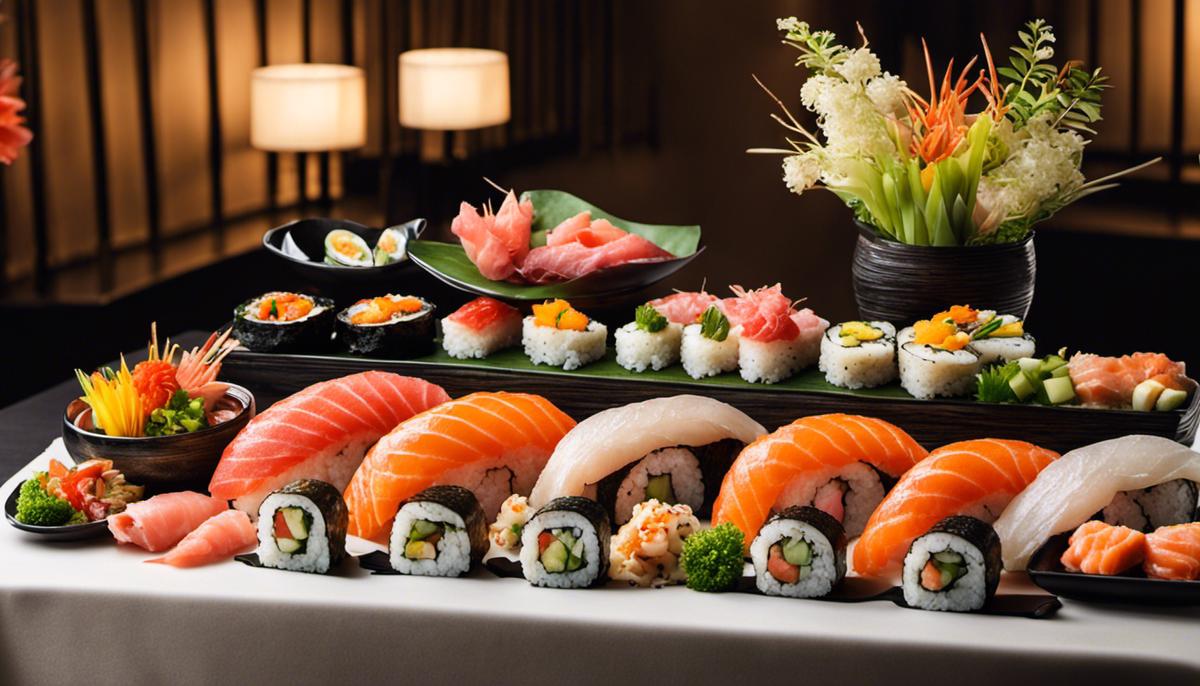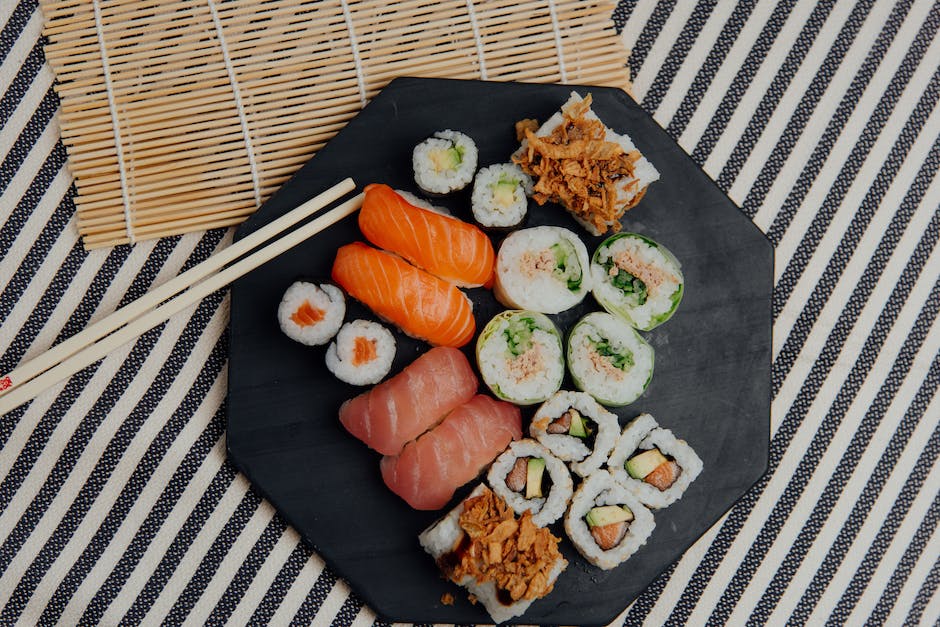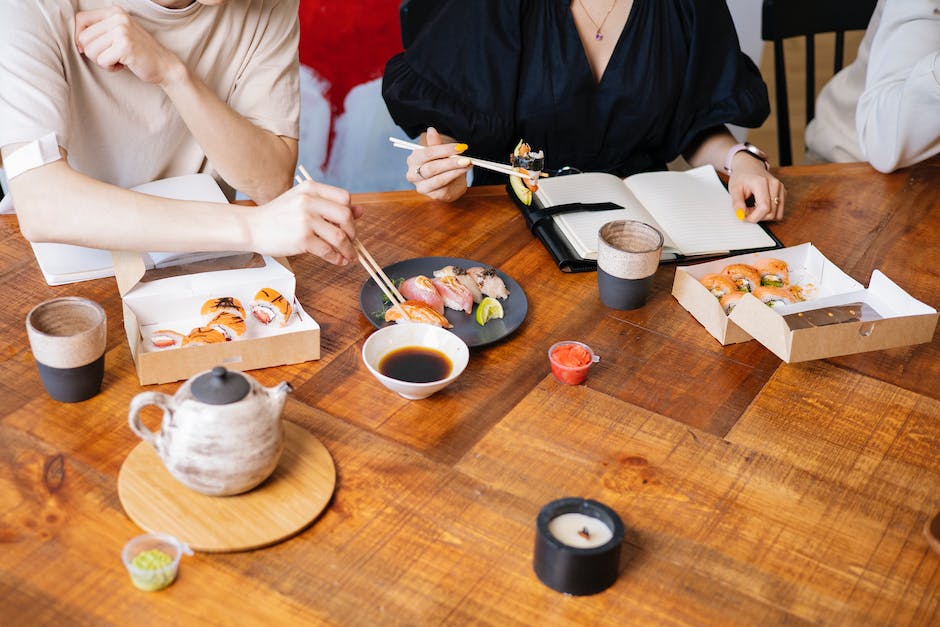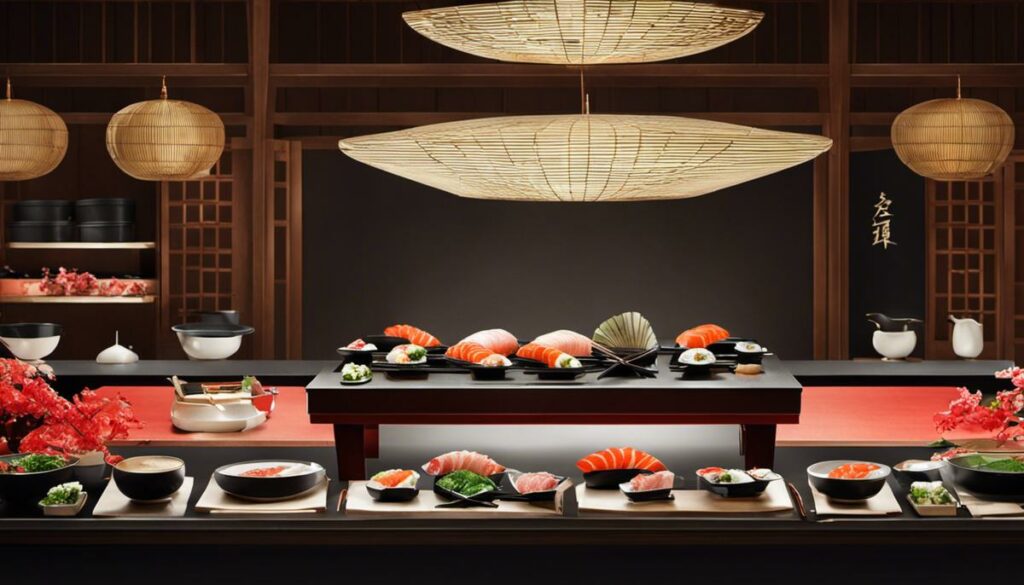The preparation of sushi is an art form that has been perfected over generations. From preparing the sushi table to presenting the sushi rolls, there are many elements to consider to create an authentic sushi experience. This knowledge of the perfect staging is not only important for the sushi chef, but also for the one who serves the sushi and has to create an appropriate atmosphere for it. In the following, we will deal with the preparation of the sushi table, learn the art of correctly presenting and arranging sushi rolls, and explore the basic rules of sushi etiquette that should be observed when serving and eating sushi.
Preparation of the sushi table

Presentation of the sushi rolls
Optimal presentation of sushi rolls: make it creative!
Correctly arranging your sushi rolls is key to an aesthetically pleasing sushi platter. Before you start, you should have a distinctive composition in mind that will show well on the dishes. Think of the sushi rolls like an artist painting his canvas: colors, textures, and shapes should harmonize and impress the overall look.
Variation is the key here! By combining nigiri, maki, and uramaki, you can present a variety of shapes and colors to your audience. Start in the center of the plate, then work your way to the edge. Make sure to alternate between the different types of sushi for visual symmetry.
Not to forget the correct use of garnishes and side dishes. These are more than just decoration and should always be chosen and placed wisely. Gari, pickled ginger, light pink and crunchy refreshing, adds a feast for the eyes and helps cleanse the palate between sushi bites. Green splashes of wasabi and bright pieces of fresh, green leeks can add bright pops of color.
A clever assortment of sushi rolls can be further enhanced by the right choice of sake or tea. Both are traditional drinks that round off the sushi experience and elevate the flavor of the different rolls.
The right use of light can also work wonders. The right ambience can make the difference between a simple sushi evening and an extraordinary dining experience. Use indirect warm light to enhance your presentation.
One final note: Make sure there is enough space between the sushi rolls. Guests should be able to easily pick up each roll with the chopsticks. An overcrowded plate can look disorganized and difficult to handle.
Always remember that the presentation of sushi is more than just food on a plate, it’s about an overall experience that appeals to all the senses. Take your time to create a carefully composed arrangement and enjoy the process.
Good luck showcasing your next sushi rolls! Make it stylish and you’re bound to make a deep impression.

Introduction to Sushi Etiquette
Mutual consideration at the sushi table
Now that we’ve taken a deep dive into the subtle points of sushi dish aesthetics and presentation, let’s take a look at the social aspects of sushi enjoyment. Because eating sushi is not only about food intake, but also about respect and appreciation.
Every sushi meal is like a carefully choreographed dance performance, where absolute harmony between everyone involved is essential. It is important that each guest knows and plays their role in order to make the experience as enjoyable and enjoyable as possible for everyone. Therefore, you should follow certain rules of sushi etiquette.
For one, you should be careful not to drown your sushi in soy sauce. A little bit is okay, but it shouldn’t be so much that it masks the taste of the sushi. A short dip is usually sufficient.
You should also handle the sushi rolls with your fingers or chopsticks instead of cutlery. It is often recommended to eat sushi with your bare hand, but if you don’t feel comfortable doing so, you can also use chopsticks. In any case, the sushi should be eaten in one piece and not cut up.
In addition, it is mostly rude to leave chopsticks stuck in rice or sushi, as this symbolizes a funeral ritual in Japan. Instead, place the chopsticks on the bracket provided.
Finally, it is important to honor the sushi chef. It is customary to give a compliment or a simple “thank you”. Every bite you take is the result of years of training and hard work, and it’s important to appreciate that effort.
Don’t worry – it’s not about being perfect. Rather, it’s about understanding the respect and consideration embodied in these rules. It’s all about diving deep into Japanese culture and appreciating the art and beauty of each sushi bite.
Expand your sushi experience
In conclusion, etiquette when serving sushi is not only an expression of culinary aesthetics, but also reflects a profound respect for traditional Japanese art and culture. It is an immersive experience that goes far beyond the palate and appeals to all the senses. Thus, every sushi meal transforms from something as simple as food into an aesthetically and culturally enriching experience.

Now that we’ve dived into the deeper details of the art of serving sushi and explored the importance of every detail in preparing a sushi table and presenting the sushi rolls, we should now have an in-depth understanding of sushi etiquette. By handling the chopsticks correctly and treating sushi with respect, we not only show our appreciation for Japanese culture, but also enhance our own sushi experience. With this knowledge, we are now able to create and enjoy our own authentic sushi experience at home or in any other setting.


